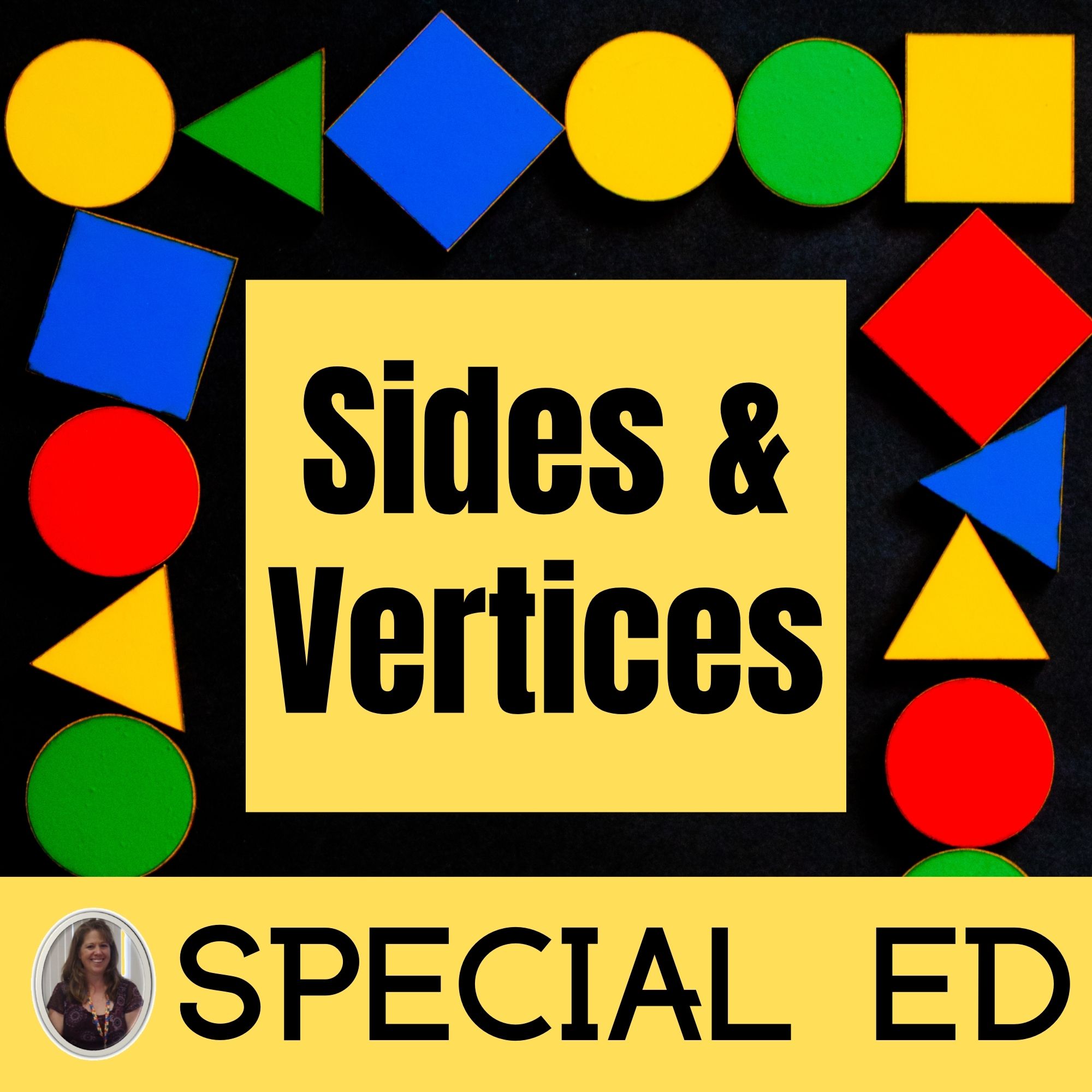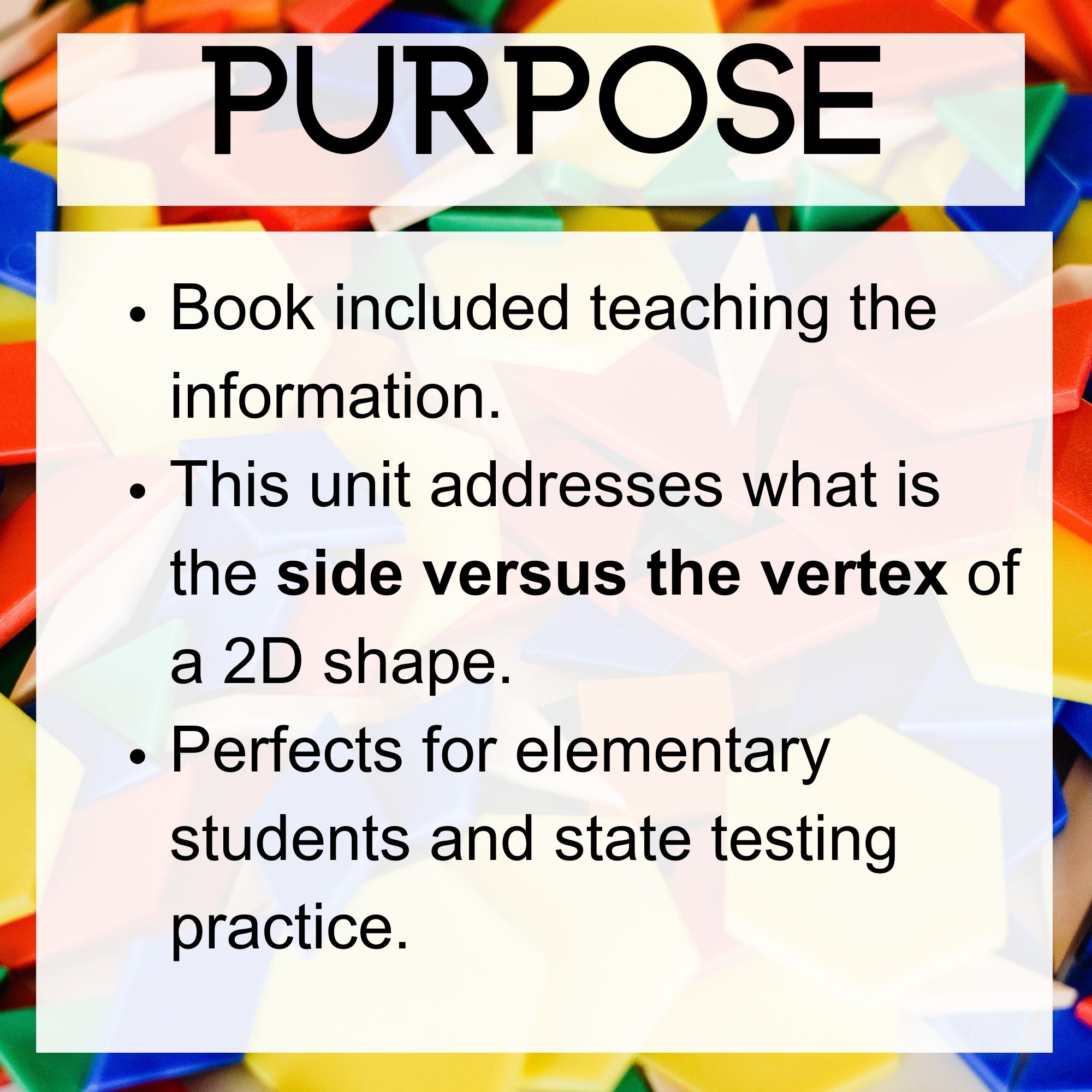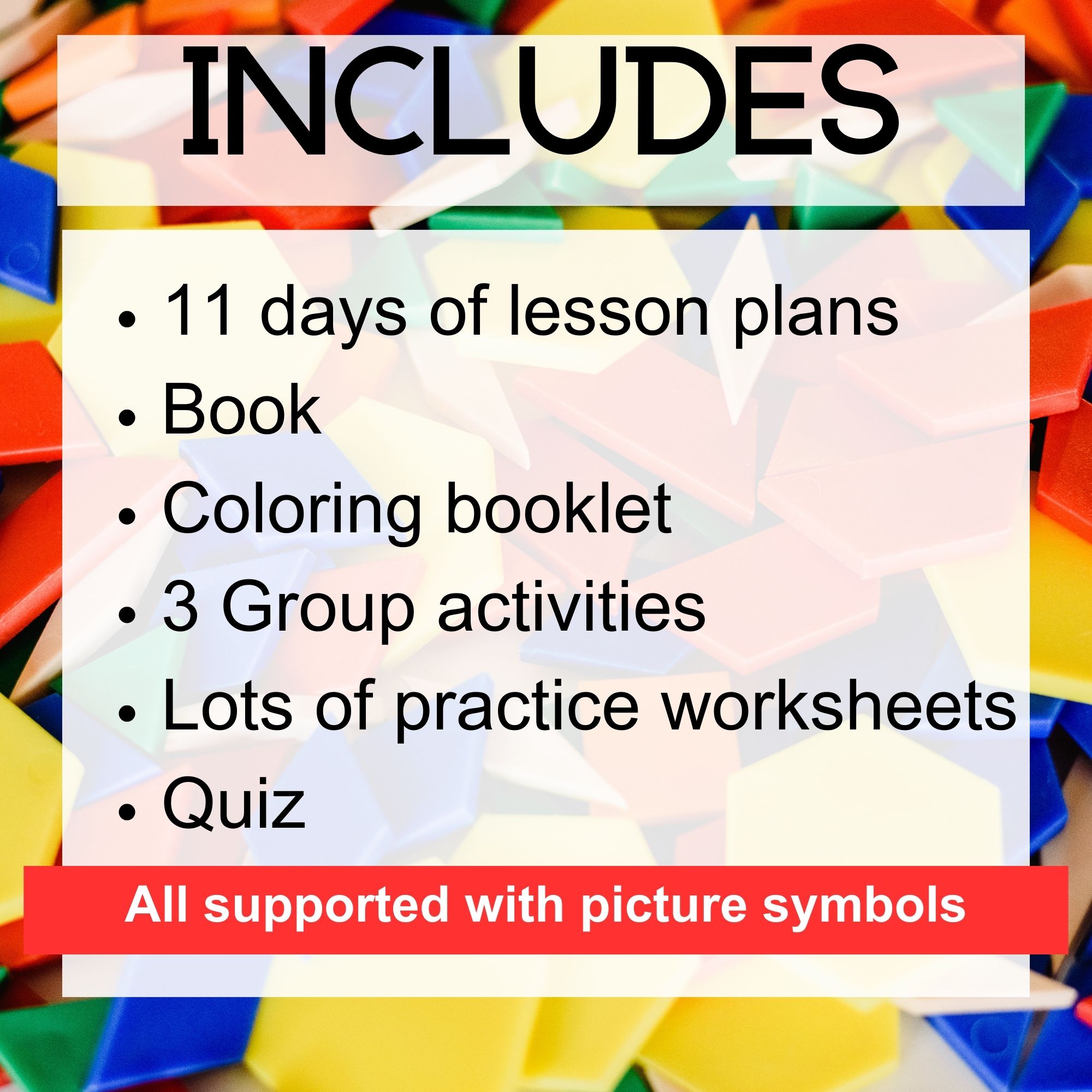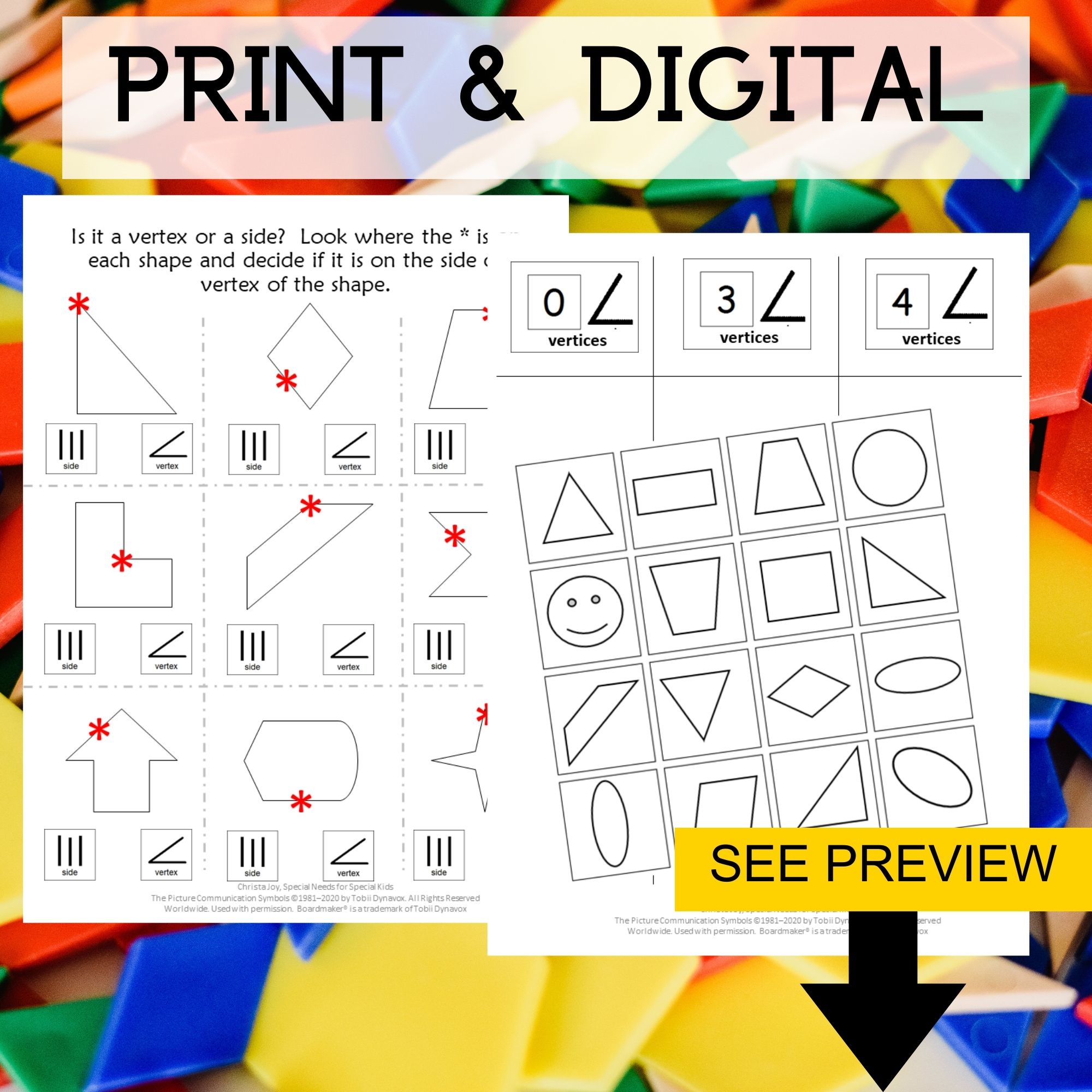Sides and Vertices 2D Shapes for Special Education PRINT and DIGITAL
CLICK FOR PREVIEW
$5.50
Practice counting sides and vertices of 2D shapes in this 66 page and 26 slides unit designed for students with autism and special learning needs. This unit looks at the attributes of 2D shapes, specifically sides and vertices.
The books and activities look at 2D shapes with straight and curved sides as well as counting the number of sides and vertices. There are suggestions for differentiation so all of your students are able to utilize most of the components in this unit.
NOTE: This unit does NOT work on the naming of 2D shapes.
*****This unit contains digital activities. There are 26 google slides which include a differentiated set of slides and a movie version of the book.
For more advanced skills, check out these Geometry Units for middle and high school:
See the preview for a more detailed look at the contents.
*****************************************************************************
Sides and Vertices Activities Include:
⭐ This unit comes in 2 complete files. One is in color and one is in black and white.
In the zipped folder you will find:
- 11 day lesson plan
- Sides and vertices activities in color
- Sides and vertices activities in black and white
- Voice-recorded PowerPoint shows
- Sides and vertices book (PowerPoint) to use with activities
- Links and directions to digital activities
Sides and Vertices Activities:
- 3 group activities
- Sorting and identification
- Who am I
- Bingo
- Sorting worksheets (includes digital activities)
- Counting sides and vertices worksheets (includes digital activities)
- Quiz (includes digital activities)
- 30 google slides
*****************************************************************************
Much of what I have learned about curriculum development is incorporated in these units. For example, do not be afraid of repetition. It is critical that students with significant disabilities get to experience material over several days to be able to fully assimilate what is being taught. Also, adding visual supports to your printables and class activities helps students be able to pay more attention to the content you are presenting rather than the mechanics of what is expected. Finally, ask questions. Good questions!! Regardless of the material, if we can ask students good questions it will push them to think more deeply than before.
$5.50
Lorem.



